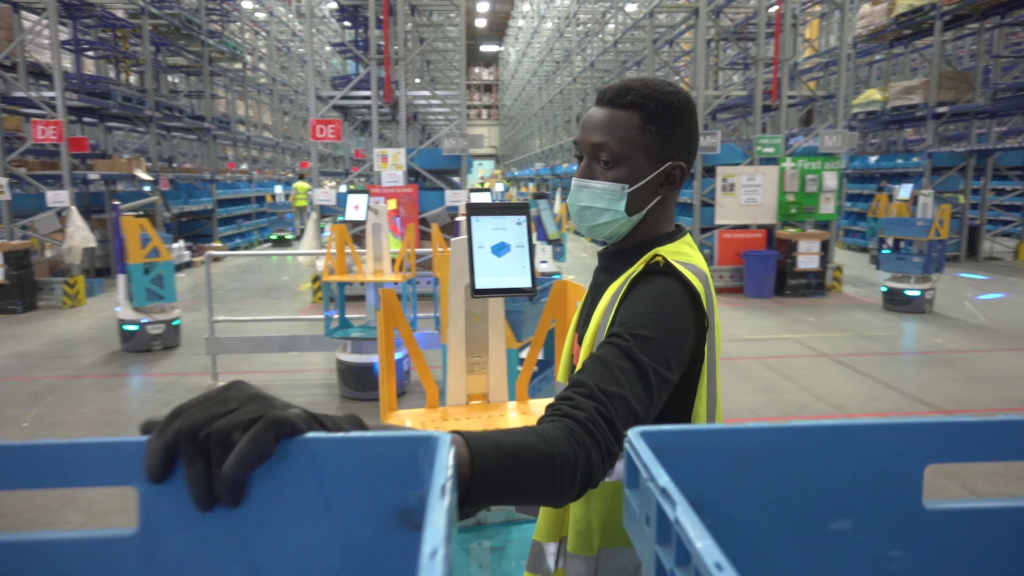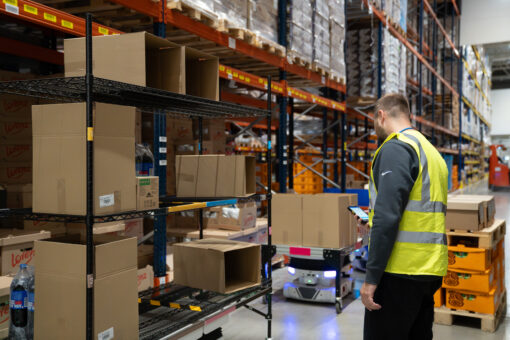WP: How to achieve 400 UPH with Locus Fast Pick
WP: How to achieve 400 UPH with Locus Fast Pick Download Now!
Healthcare Automation 101: Where to Start and Pitfalls to Avoid
Mary Hart, Sr. Content Marketing Manager

When the pandemic started, it exposed supply chain issues across all industries, but especially in healthcare. Hospitals and healthcare facilities carried as little inventory as possible, but found they didn’t have the products they needed to keep up with patient and physician demands. On the Tecsys webinar, “From Dock to Doc: Addressing Patient Needs Through Smarter Automation”, Guy Courtin, Tecsys Vice President of Industry and Advanced Technology, and Andrew Wang, Locus Robotics’ Director of Healthcare and Industrial Segments, discussed the downfall of the Just-in-Time (JIT) model and a better option; where medical warehouses should start with automation; and the top pitfalls to avoid.
Just-in-Time vs Just-in-Case
Before the pandemic, hospitals and health systems followed the JIT model by carrying as little inventory as possible and having products delivered to them when they needed it. When the pandemic hit, they found that their ability to receive certain products, especially for Personal Protective Equipment (PPE) like masks, was severely disrupted.
Some hospitals still use the JIT model, but they survive by having a surplus of their most-used materials on hand. More hospitals are turning to the Just-in-Case (JIC) model and have increased their supplies and stock so they have what they need on-hand at any time to treat their patients. With the shift towards JIC, healthcare systems have created storage space in their own facilities for the surplus and rely on one or two distribution centers for other products.
What’s Stopping You from Automating?
There are two main pitfalls that stop healthcare systems from making the move to automation. First is a concern about how much it costs to put in automation. But that doesn’t have to be a concern if you choose automation like Locus Robotics that offers Robots as a Service (RaaS), which reduces the upfront capital. Instead of having to budget for a lot of CapEx, you can instead fund the automation through OpEx.
The second headwind faced by automation providers is a company’s hesitancy to move to new technology, because change is difficult to swallow. Your associates could be scared when they hear the word “automation” because they think they’re going to lose their job. They’re not. AMRs only augment the associates you already have and help associates to upscale their skills and do work that is less strenuous. Companies and associates alike are learning more about automation and robotics and getting past the “robots are scary” mindset. Even companies that had automation on their five-year plan now want to make the move to automation because they’re seeing the benefits and realizing that they need to get past any fears they have about change.
Where to Start with Healthcare Automation
Step one in making the move to automation is to start with your end goal. Think about what the problem you’re solving for and work backwards. Even if that end goal is 10 years out, there are small steps that you can take now to start saving and make an impact with new technology. This will help you to see how automation will work in your ecosystem without being disruptive. Once you’ve identified the issue, you can determine how automation and autonomous mobile robots (AMRs) will solve that issue to make your operation as effective as it can be.
For integrated delivery networks (IDNs) that provide fulfillment for multiple hospitals, low unit measuring (LUM) picking is a great way to start with automation and AMRs. You’ll see immediate results without disruption to your current operations.
Another way to start using AMRs in your facility is using the bots for point to point transport, otherwise known as P2P, where the bots move material from one location to another. Think about the cardboard dunnage carts you have around the warehouse. Those have to be picked up and taken to the baler, which can be a strain on a human warehouse associate. Instead, automation frees up the associate to focus on a more mindful and less strenuous task and delegate that P2P task to a bot.
With Locus Robotics, our robots work alongside your human associates with results shown on day one to alleviate fears, speed up productivity, and can help your healthcare system deliver products to providers that work by the JIT and JIC model with ease.
Are you curious about how Locus Robotics can help your healthcare system address both provider and patient needs through smarter automation?
Talk to us and we’ll tell you more!




